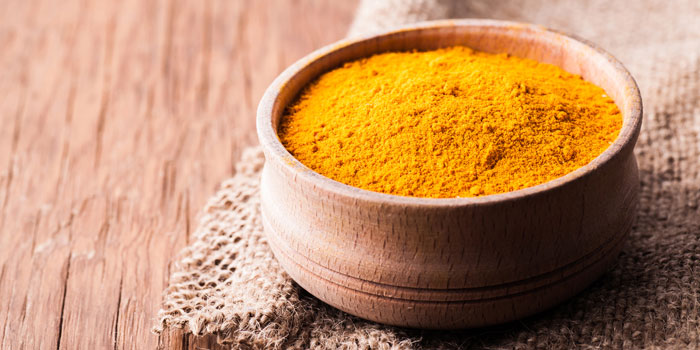
Pronounce it: term-er-ik
Turmeric is a fragrant, bright golden-yellow root that is most commonly seen and used dried and ground. Although sometimes suggested as an alternative to saffron, these flavours have nothing in common, and so turmeric should never be used as a saffron substitute unless it’s purely for colour.
The fresh root is small-finger sized, like a minimal ginger root, to which family it belongs. The flavour is fresh and acidic but somewhat earthy, lightly spiced and engagingly flavoured and scented, with a bright life that the more common ground version quickly loses.
Ground turmeric is a major component in curry power mixtures but although it certainly adds a warming colour, its use is more for flavour, which is mildly fragrant and has a slight ginger-like bite; however it is also bitter in quantity and overuse can make very unpleasant eating. Used properly it contributes a gentle background, a bridge between other spices, helping blend their flavours into something new and satisfying.
Fresh turmeric can be grated into mixtures rather than using ground turmeric but beware. Turmeric is also an important traditional dye and very difficult to get out of skin or clothes– use an apron and gloves if you are using fresh turmeric; but even ground turmeric can stain fabric, bench tops et al if moisture is also present.
Read our guide on the health benefits of turmeric.
Availability
Fresh turmeric is more and more commonly available in supermarkets and will be part of the range of good Asian shops. Ground turmeric is generally available wherever spices are sold.
Choose the best
As turmeric ages it loses aroma and becomes powdery and smells more like damp cardboard, a familiar offensive pong in kitchens and restaurants using old stock. Beware of buying it from a bulk container. Instead, buy it regularly in small closed containers and discard these once opened within weeks if possible.
Store it
The root is best kept chilled. Dark and cool is best for storing ground turmeric.
Cook it
Turmeric, whether used directly from the fresh root or dried and ground, is a fascinating spice to use in many ways, as long as you can trust yourself to use it with discretion. Apart from its use in curry powders, it works well by itself with anything oily or fatty, so turning cooked peeled potatoes in butter or oil with turmeric gives a good result, as would doing the same with carrots or parsnips; adding garlic and lots of parsley would be even better. There is an orange-like flavour present, too, so adding turmeric to hot cooked rice and grating orange zest directly over that before mixing well with melted butter is delicious. Turmeric is a gentle way of colouring and flavouring rice salads but should be incorporated during the cooking. When cold, check the flavour and if there is something flat about it, add fresh grated ginger root or lime juice.
Although turmeric can be used by itself, the best thought is always to use it as a background to other flavours: if you find you have added too much and created unwanted bitterness, counteract this with lime or lemon juice rather than with any sweetness.
Be the first to comment on "Turmeric"